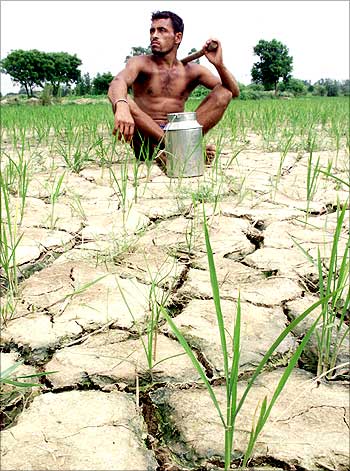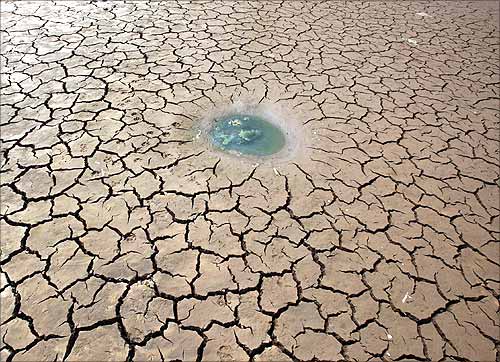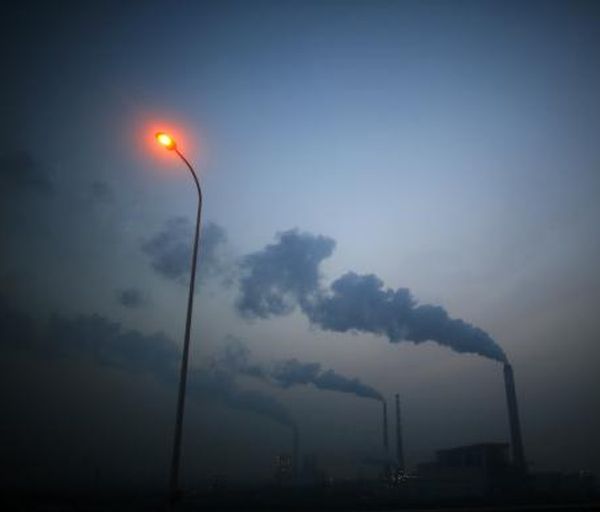 | « Back to article | Print this article |
UN's latest climate change report has put India on high alert
An expert panel appointed by the United Nations reviewed a draft report that raises the probability that climate change is man-made to 95 per cent and has warned of ever more extreme weather unless respective countries take steps.
The latest report of the United Nations Intergovernmental Panel on Climate Change (IPCC) sounds more alarming than its earlier versions — and for good reasons. Even as global warming has begun to hit life, property, infrastructure and the economy, there seems little let-up in environmentally harmful activities. Going by the IPCC report, which was released in Japan on Monday, a rise of two degrees Celsius in global temperature could knock 0.2 to 2.0 per cent off the world’s gross domestic product (GDP) annually.
Click NEXT to read more..
UN's latest climate change report has put India on high alert
Worse, it might vitiate the global security environment, thereby leading to more international conflicts over resources such as water and energy and issues related to – and emanating from – loss in agricultural and industrial production, price spikes, and food and livelihood security of the poor.
Even more staggering is the estimated need for annual investment of around $147 billion in low-carbon energy till 2029 to ensure a safe, livable climate in the future.
This seems a daunting task, given that governments’ commitment to combating global warming has tended to wane across the globe in the wake of the economic slowdown.
Click NEXT to read more...
UN's latest climate change report has put India on high alert
India is among the most vulnerable countries. It could lose 1.7 per cent of its GDP even if the annual mean temperature rises by just a degree.
The loss to its agriculture is valued at as much as $7 billion by 2030, which would affect the incomes of 10 per cent of India’s population.
The most worrisome in this context are the projected losses in crop output in the country’s Indo-Gangetic belt, which would affect at least 200 million people who rely chiefly on farm harvests for their livelihood.
Even the livestock sector is unlikely to remain unscathed; its output and product quality have been predicted to deteriorate drastically.
Click NEXT to read more..
UN's latest climate change report has put India on high alert
The global warming, moreover, is expected to threaten human habitations and natural biodiversity in coastal belts, including coastal towns such as Mumbai and Kolkata.
Equally scary is the IPCC’s prognosis that extreme weather events, such as last year’s flash floods in Uttarakhand and cyclone in Odisha, are likely to turn more frequent if the present trends in global warming remain unchanged.
Click NEXT to read more...
UN's latest climate change report has put India on high alert
The only silver lining is that the projected damages can be slashed by as much as 80 per cent if timely and effective climate resilience measures are taken. There isn’t much hope on that count so far. Though New Delhi has put together a well-conceived National Action Plan on Climate Change, the plan has failed to take off except in bits and pieces. Many of the eight “national missions” envisaged to be launched under this plan have remained non-starters.
Click NEXT to read more...
UN's latest climate change report has put India on high alert
These were slated to deliver measurable results by 2017 in critical areas, such as restricting greenhouse gas emissions, increasing green energy use, enhancing power production and consumption efficiency, and extending the country’s green cover to 33 per cent of its total geographical area.
Meanwhile, other damage mitigation measures brook no further delay.
These include refinements in the weather-forecasting and disaster-forewarning systems, which, admittedly, have seen some improvements of late. Besides, the disaster management machinery needs to be revamped and expanded.






